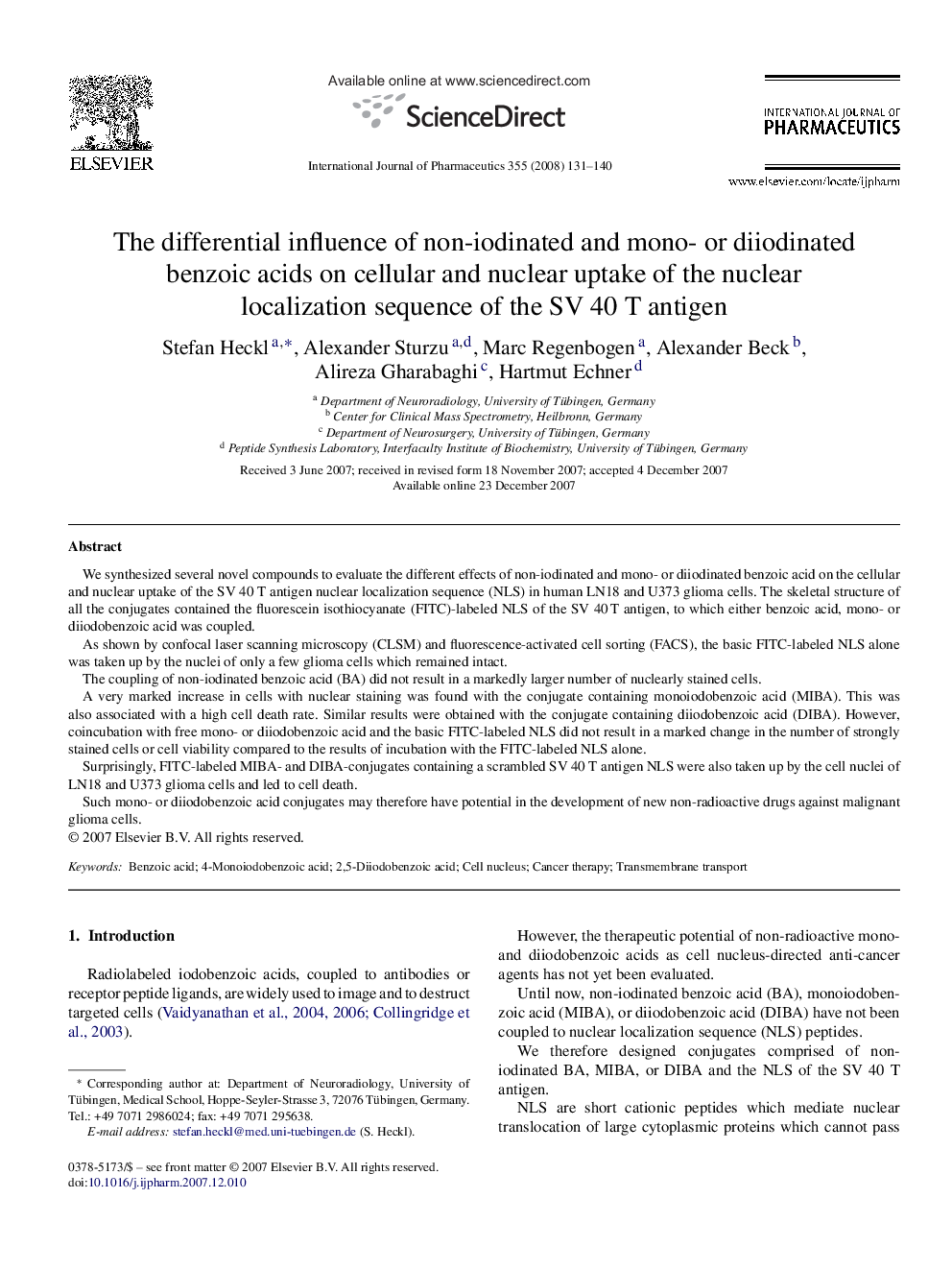| Article ID | Journal | Published Year | Pages | File Type |
|---|---|---|---|---|
| 2505578 | International Journal of Pharmaceutics | 2008 | 10 Pages |
We synthesized several novel compounds to evaluate the different effects of non-iodinated and mono- or diiodinated benzoic acid on the cellular and nuclear uptake of the SV 40 T antigen nuclear localization sequence (NLS) in human LN18 and U373 glioma cells. The skeletal structure of all the conjugates contained the fluorescein isothiocyanate (FITC)-labeled NLS of the SV 40 T antigen, to which either benzoic acid, mono- or diiodobenzoic acid was coupled.As shown by confocal laser scanning microscopy (CLSM) and fluorescence-activated cell sorting (FACS), the basic FITC-labeled NLS alone was taken up by the nuclei of only a few glioma cells which remained intact.The coupling of non-iodinated benzoic acid (BA) did not result in a markedly larger number of nuclearly stained cells.A very marked increase in cells with nuclear staining was found with the conjugate containing monoiodobenzoic acid (MIBA). This was also associated with a high cell death rate. Similar results were obtained with the conjugate containing diiodobenzoic acid (DIBA). However, coincubation with free mono- or diiodobenzoic acid and the basic FITC-labeled NLS did not result in a marked change in the number of strongly stained cells or cell viability compared to the results of incubation with the FITC-labeled NLS alone.Surprisingly, FITC-labeled MIBA- and DIBA-conjugates containing a scrambled SV 40 T antigen NLS were also taken up by the cell nuclei of LN18 and U373 glioma cells and led to cell death.Such mono- or diiodobenzoic acid conjugates may therefore have potential in the development of new non-radioactive drugs against malignant glioma cells.
